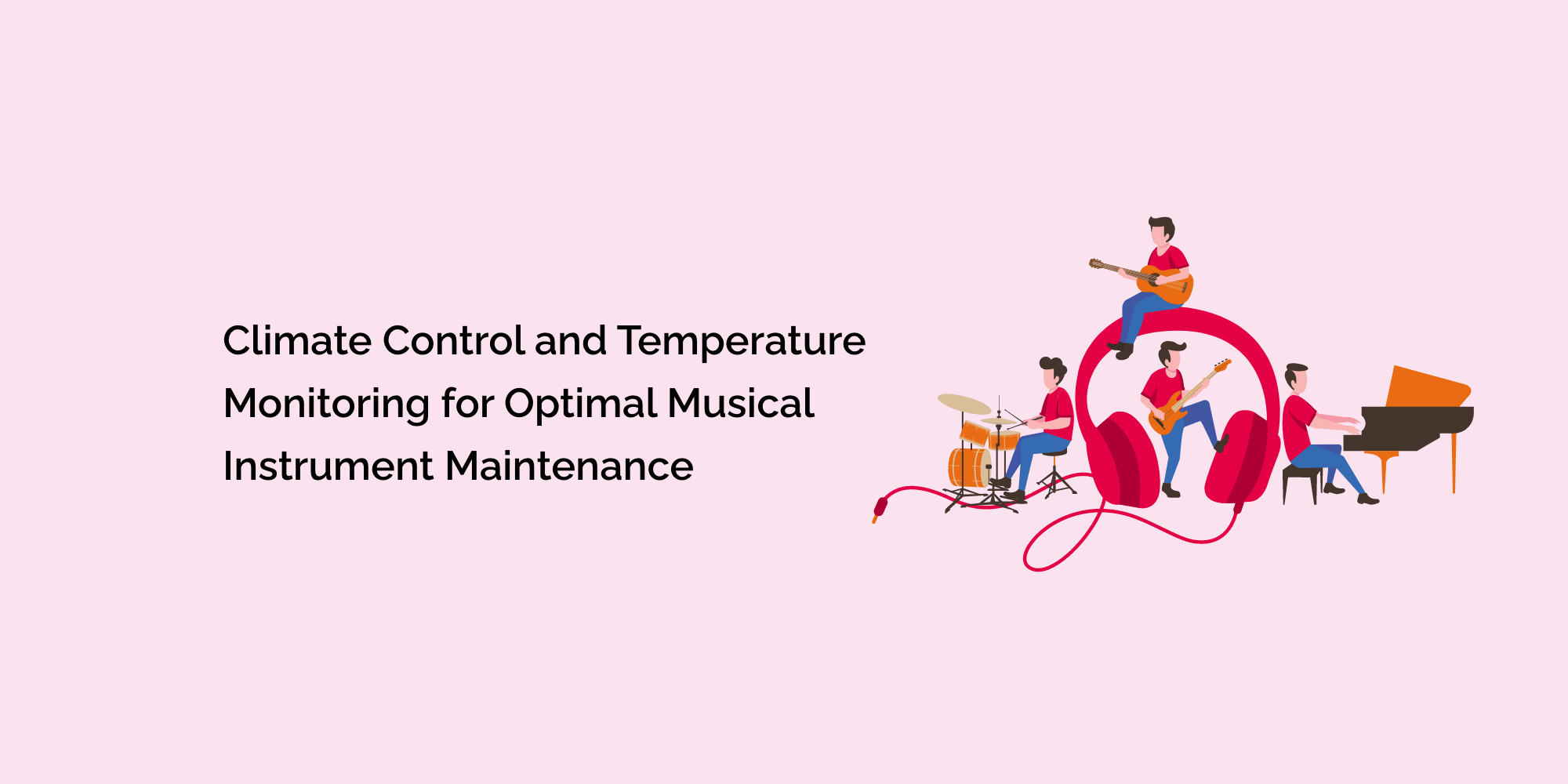Maintaining optimal climate conditions, including temperature control, is vital for the longevity and performance of musical instruments. Fluctuations in temperature and humidity can cause significant damage to devices, leading to structural issues, tonal changes, and reduced lifespan. Climate control and temperature monitoring are essential to ensure optimal instrument maintenance. In this detailed blog, we will explore the importance of climate control, the impact of temperature on musical instruments, and the best practices for temperature monitoring to preserve and protect these valuable assets.
Understanding the Impact of Climate on Musical Instruments
Climate, including temperature and humidity, significantly impact musical instruments. Fluctuations in these factors can lead to problems such as wood swelling, cracking, glue joint failures, and changes in tonal quality. Poor climate control can result in costly repairs and compromised instrument performance.
The Importance of Temperature Control in Instrument Maintenance
Temperature control is crucial for instrument maintenance as it directly affects the stability and integrity of instrument materials. Extreme temperatures can cause rapid expansion or contraction of materials, leading to warping, cracks, or damage to delicate components. Maintaining a stable temperature helps preserve instruments' structural integrity and tonal stability.
Optimal Temperature Ranges for Instrument Storage and Usage
Different instruments have specific temperature requirements. For example, pianos generally fare well in a temperature range of 20-22°C (68-72°F), while string instruments like violins prefer a slightly lower range. Wood density, glue types, and metal components influence the ideal temperature ranges. Manufacturer's recommendations should be followed for each instrument type.
Climate Control Systems for Instrument Storage Spaces
Climate control systems, such as Heating, Ventilation, and Air Conditioning (HVAC), regulate temperature and humidity in instrument storage spaces. These systems help maintain stable conditions by removing excess moisture or adding humidity when necessary. Proper insulation and ventilation are also critical considerations for effective climate control.
Temperature Monitoring Solutions for Instrument Maintenance
Temperature monitoring solutions provide valuable insights into climate conditions. Traditional thermometers and hygrometers offer essential temperature and humidity readings. Digital temperature sensors and data loggers provide more accurate measurements and data logging capabilities. Wireless monitoring systems allow for remote monitoring and real-time alerts.
Placement of Temperature Sensors for Accurate Readings
Placing temperature sensors in critical areas is crucial for accurate readings. Instrument storage spaces should strategically place sensors to capture the temperature near the instruments. Detectors should be positioned away from direct sunlight, heat sources, and drafts that could affect readings.
Calibration of Temperature Monitoring Devices
Regular calibration of temperature monitoring devices is necessary to ensure accuracy. Calibration methods include using known reference temperatures, professional calibration services, or internal calibration features in some devices. Calibration should be performed at regular intervals to maintain the reliability of the temperature readings.
Real-time Monitoring and Alerts for Temperature Deviations
Real-time monitoring and alerts provide immediate notifications when temperature deviations occur. Continuous monitoring systems track temperature changes and log data, allowing for analysis and timely intervention. Instant alerts enable prompt action to rectify temperature fluctuations and prevent potential damage to instruments.
Data Analysis and Trend Monitoring for Instrument Care
Data analysis and trend monitoring help identify temperature patterns and deviations over time. Analyzing temperature data allows for proactive measures, such as adjusting climate control settings, addressing insulation issues, or implementing preventive maintenance. Tracking temperature trends helps preserve instruments and prevent climate-related problems.
Best Practices for Instrument Maintenance and Climate Control
Proper instrument storage techniques, including suitable cases or humidity-controlled cabinets, play a significant role in maintaining stable temperature conditions. Minimizing temperature fluctuations in performance spaces through insulation, ventilation, and avoiding direct sunlight exposure is essential. Regular maintenance, including inspections and adjustments, contributes to instrument longevity.
Certainly! Here are some frequently asked questions (FAQs) regarding climate control and temperature monitoring for optimal musical instrument maintenance:
What role do climate control systems play in instrument storage spaces?
Climate control systems like HVAC help regulate temperature and humidity in instrument storage spaces. They maintain stable conditions by removing excess moisture or adding humidity when necessary, creating an environment conducive to instrument preservation.
How can temperature monitoring solutions help with instrument maintenance?
Temperature monitoring solutions provide valuable insights into climate conditions. They allow for accurate measurement of temperature and humidity levels, helping musicians and instrument caretakers track and maintain optimal conditions for instrument storage and usage.
What types of temperature monitoring devices are available?
Various types of temperature monitoring devices are available, including traditional thermometers, hygrometers, digital temperature sensors, data loggers, and wireless monitoring systems. These devices offer different features like real-time monitoring, data logging, and remote access capabilities.
Conclusion
Climate control and temperature monitoring are critical elements of optimal musical instrument maintenance. Understanding the impact of climate on instruments, implementing best practices for temperature control, utilizing temperature monitoring solutions, and educating musicians on instrument care are critical steps in ensuring the longevity and performance of instruments. By maintaining stable temperature conditions, musicians and instrument enthusiasts can protect their valuable assets, preserve instrument integrity, and enjoy the full potential of their devices for years to come.








